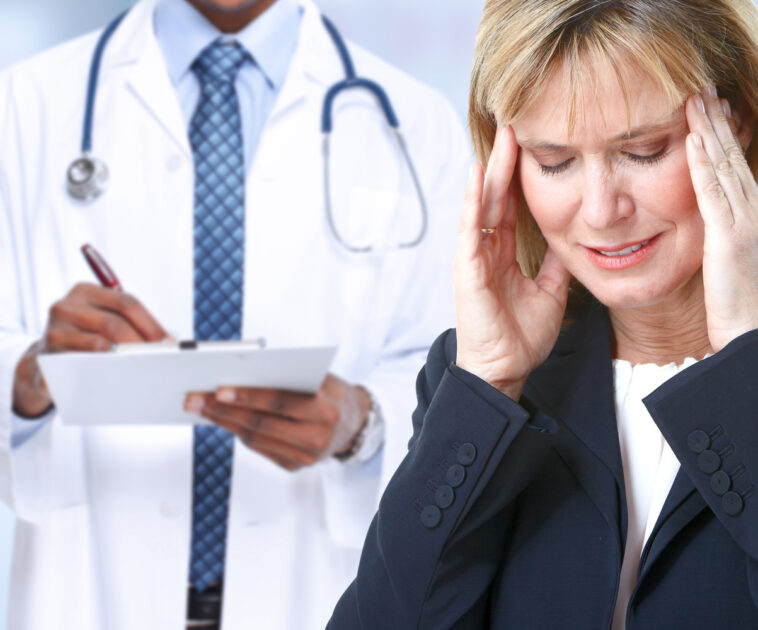Migraine is a painful recurring headache which can last from hours to days. It can be accompanied by a nauseous feeling or sensitivity to sound or light. Chronic migraine affects around 2% of the world population, and women three times more than men. So it is imperative to find the causes behind it so that the condition can be managed well.
A definitive explanation is still not available even though potential causes have been identified:
- Hormonal changes: It has been observed that fluctuations in estrogen trigger headaches for women. Women who have a history of migraines have reported having headaches immediately after or before their periods. This is the time when there is a major drop in estrogen. Women have also reported to having migraine headaches during menopause, pregnancy or during the postpartum period.
- Medications: Oral contraceptives as well as hormone replacement therapy may worsen migraine. Medication overuse may also trigger headaches.
- Foods: Some food products like salty and processed foods, citrus foods or aged cheese bring on an onslaught of migraine. Migraine can also be inversely brought on by skipping meals or during fasting periods.
- Emotional triggers: Mental stress arising from personal life or work pressures is a very prominent factor and can cause migraine. Apart from this, depression, anxiety, and excitement can also cause it.
- Drinks: Alcohol, especially wine as well as other highly caffeinated beverages could trigger migraine.
- Physical causes: Physical exertion can provoke migraine. This includes sexual activity as well.
- Sensory stimulation: Sun glare, flickering screens, loud sounds, strong perfumes, cigarette smoke or bright lights can trigger migraine in some. People who suffer from migraine are extremely sensitive to light and prefer darkened rooms.
- Changes in sleeping pattern: Jet lag, frequent changes in sleeping pattern, missing sleep or even getting too much sleep can induce migraine.
- Change in environment and weather: A change in location or weather can bring on a migraine. People who have to frequently travel may experience this.
These are the general causes but there are some special risk factors as well which increase the chances of getting migraine exponentially, and these are:
- Genetics: If there is a family history of migraine, then chances are that you will develop it as well.
- Age factor: Although migraine can occur at any age it often occurs during adolescence and peaks during the 30s.
- Gender: As stated, women are more likely to develop migraine. From puberty and beyond, more girls get affected, but boys tend to get affected more during their childhood.
- Abnormalities: Changes in brain chemicals and nerve pathways, especially in the vascular system could trigger migraine.
It is also important to identify the symptoms so that one can differentiate between a migraine and a headache:
- People experience moderate to severe pain usually limited to just one side of the head but it can occur on both sides as well.
- Experiencing severe throbbing and pain.
- The pain makes it impossible to carry out any regular task. It worsens when carrying out any physically straining labor.
- Feeling nauseous and vomiting.
Migraine triggers are pretty unique to every person and one person may have several triggers.




















